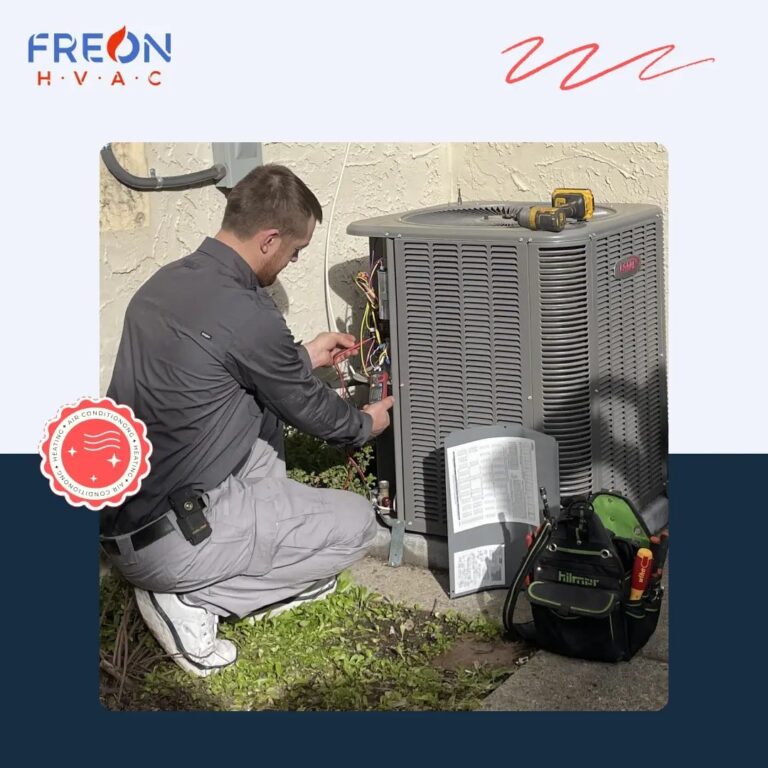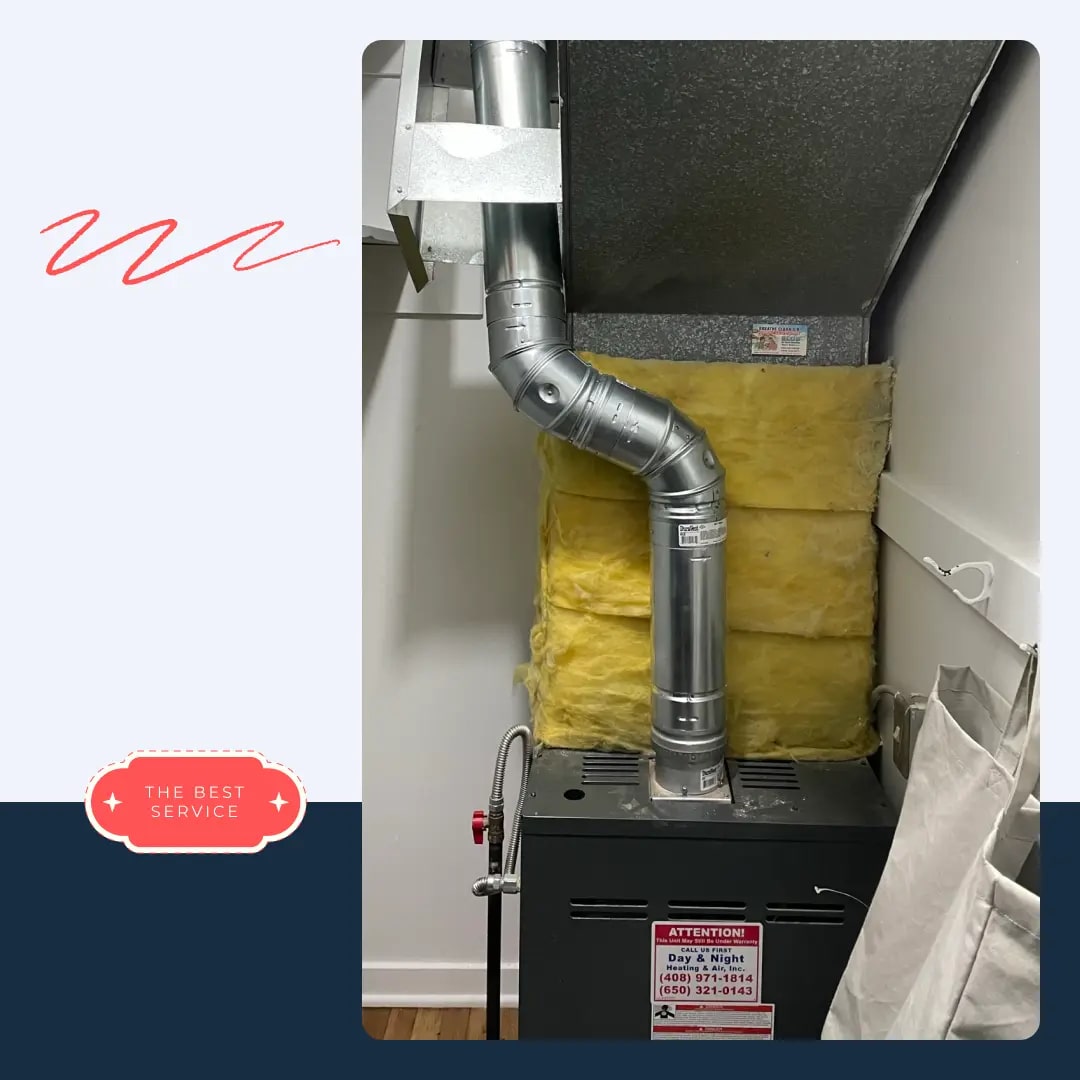Best Goodman AC Installers and Their Secrets

The perfect air conditioning system doesn’t start with buying any unit you can afford, but with choosing the right one and installing it correctly. Even the most advanced warrior of cool won’t deliver real efficiency if the capacity is chosen “by eye,” the ductwork is unbalanced, and the Goodman central air conditioner installation is rushed.
The techs at Freon Service will help you make the right choice of equipment, professionally integrate it into your space, and present you with a very reasonable amount in the “Payment Due” column. Along the way, we’ll share some of our secrets to successfully executing even the most complex projects.
Choosing the Right Capacity for Installing Goodman AC Unit
The topic in this section’s headline is an important one. That’s why we start with it. Determining the optimal cooling capacity is the key to the efficiency and durability of the entire system. But what if you get it wrong? Then expect:
- Frequent on/off cycles.
- Accelerated wear and tear.
- Higher electricity bills.
At this moment, let’s look at the 3 key factors we always consider: room size, insulation, and heat sources.
How Goodman AC Installers Evaluate Room Size
In essence, the very first variable we must pin down is the total square footage of your home, office, or apartment. The logic is disarmingly straightforward: the greater the expanse of space, the more cooling tonnage the system must deliver. Now, you might raise an eyebrow and ask: what, pray, is this “tonnage” everyone in the trade keeps invoking?
- Here’s the knockout blow: tonnage is not some fanciful marketing term, but a relic of engineering tradition.
- It stems from an old thermodynamic benchmark—the precise amount of heat required to melt one ton of ice over a 24-hour period.
So, when your Goodman AC wears the proud label of “2-ton” or “3-ton,” it is in fact echoing a centuries-old convention, not a passing industry fad.
But we’re not melting ice indoors, are we?
Exactly:
- Applied to heating and cooling, 1 ton means enough work to cool about 400–500 sq ft.
- For example: a 2,000 sq ft home requires about 4–5 tons of capacity from its warrior of cool.
What happens if a Goodman AC installer gets the tonnage wrong and the unit is too small for the job?
- It can’t keep up with demand.
- The space remains stuffy.
- The small hero runs nonstop.
- It overheats and “calls in sick.”
And who’s to blame?
But what if your Goodman system is oversized? Is that better? Not really:
- It cools the air too quickly.
- But it doesn’t remove enough humidity.
- The result: dampness.
- Mold and mildew families are thrilled to spread through your cozy, humid rooms.
What does the right choice by Freon Service look like? The AC runs in cycles, keeping temperature and humidity in balance. Perfect!
Goodman AC Unit Installers and Wall Materials
The twist almost everyone misses is: poorly insulated buildings require more capacity. Why?
- Walls, roof, windows, and floors allow cool indoor air to escape quickly in summer, and hot air to infiltrate in.
- As a result, the AC must run longer and harder to compensate for these losses.
- Normally, an AC cools the space, reaches the set temperature, and cycles off. In a poorly insulated building, the temperature rises again quickly, forcing the unit to cycle on more often.
This also explains why some owners think “the new Goodman AC just can’t keep up.” The issue isn’t the equipment—it’s the insulation. In homes with thin walls, old windows, or uninsulated attics, the real cooling demand can be 20–40% higher.
Goodman Air Conditioner Installers and Heat Sources
This is one of the factors inexperienced installers often underestimate when advising clients on system choice. Take something as obvious as a window, for example. Look at it from a professional’s perspective:
- Glass transmits solar radiation and heats the room.
- Even modern energy-efficient glass allows 3–5 times more heat gain than a wall of the same size.
- Which direction does it face?
- North: usually shaded, with almost no impact.
- East: expect morning sun, but shade returns later, lowering the load.
- South: this is the red flag. Maximum sun in the afternoon and evening means your Goodman will have to work harder.
In our Goodman air conditioner installers’ calculations, every sun-exposed window can add +10–20% to a room’s cooling demand. That’s the baseline we use.
What else matters?
Other heat sources—appliances, heaters, electronics, even people. We all generate BTUs (heat):
- Person: 250–400 BTU/hr (sitting or working).
- Computer/laptop: 300–600 BTU/hr.
- TV (50–60″): 200–400 BTU/hr.
- Refrigerator: 1,000–1,200 BTU/hr.
- Oven/stove: 5,000–7,000 BTU/hr (like having a whole extra AC unit in the kitchen!).
As you can see, the kitchen can carry twice the load of a bedroom of the same size. Or about the same load as if 20–25 people slept in a single bedroom (we hope that’s not your case).
Jokes aside, let’s move on to a couple more pressing issues.
Goodman Air Conditioner Installation Cost and How Long It Takes
Let’s answer directly: on average, installing a Goodman central air conditioner takes 2–5 days. That includes:
- Preparing the space and removing the old system.
- Assembling and mounting the new unit and ductwork.
- Setting up thermostat, airflow, and refrigerant levels.
- Checking for leaks and testing performance.
By the way, modern Goodman models can be paired with a furnace for combined heating and cooling. For optimal comfort and energy savings, they can also be integrated with Wi-Fi thermostats.
Goodman AC installation cost usually ranges from $3,200 to $6,500. However, this figure can vary depending on several factors:
- Type of unit: split, ductless, central.
- Size and capacity: 1.5 to 5 tons.
- SEER rating: 13 to 24.5.
- Installation complexity (modifying ductwork, electrical work, etc.).
It turns out better: installing a new, efficient system can pay for itself in 3–5 years—especially if your energy-efficient model qualifies for a government rebate or tax credit.
From our side, we’ll provide you with a detailed Goodman AC unit installation cost estimate before work begins, so unexpected expenses are minimized as much as possible.
Our specialists have hands-on experience in calculating tonnage, know every detail of ductwork, are skilled in airflow balancing techniques, and are certified to work with modern refrigerants. In other words, they have everything it takes—knowledge, experience, and the right tools—to ensure your cooling machine is installed correctly and delivers maximum longevity.







